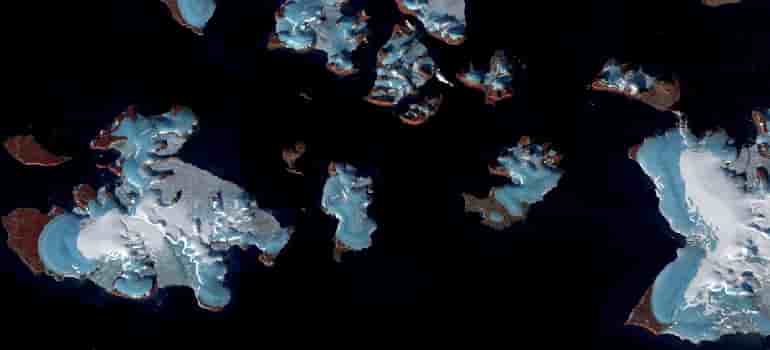DDG retreated at 13 meters per year, while PG retreated at 5.6 meters annually.
Durung-Drung and Pensilungpa, two glaciers in Ladakh, have retreated by 7.8 square kilometers and 1.5 square kilometers respectively between 1971 and 2019, according to a study published in the international, peer-reviewed journal ‘Sustainability’.
Scientists from the Wadia Institute of Himalayan Geology (WIHG) found that the melting of the glaciers, which feed the Zanskar river through two tributaries, is likely due to climate change as well as other factors such as the glaciers’ topography and morphology.
DDG glacier, which is spread across 72 square kilometers, lost 7.8 square kilometers of ice, equivalent to 10% of its total surface area. PG, a smaller glacier covering 16 square kilometers, lost 1.5 square kilometers, or 8% of its total area. The two glaciers are located in Pensi-La pass at an elevation of 14,612 feet in Ladakh.
The study revealed that despite the glaciers being just 1 kilometer apart, they are retreating at different rates. DDG retreated at 13 meters per year, while PG retreated at 5.6 meters annually. The heterogeneous response of the glaciers is influenced by factors such as snout geometry, glacier size, elevation range, slope, aspect, debris cover, as well as the presence of supra and proglacial lakes.
The two glaciers are crucial contributors to the flow of the Zanskar river, with DDG being the origin of Doda, the largest tributary of Zanskar, and PG being the origin of Suru river. The melting of both glaciers has alarmed environmentalists, as it could lead to a depletion of water resources.
The study’s lead author, Manish Metha, highlighted that while climate change is a significant force behind the glaciers’ retreat, it is not the only factor. He said that the findings suggest that several other factors are at play.
The study comes on the heels of a five-day “climate fast” by climate activist, engineer, and innovator Sonam Wangchuk in the harsh and erratic temperatures of Ladakh from January 26. Wangchuk has been advocating for the preservation of the fragile region, which he says is threatened by tourism and commercial activities.


